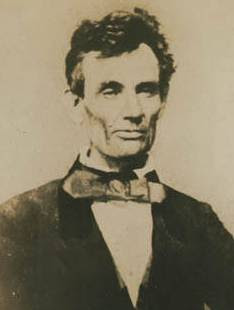
Mary Stuader, a 78 year old woman from Montgomery County, Illinois, claims she has seen Abraham Lincoln…not a picture of the sixteenth president, but the man himself!
This isn’t a ghost story. She’s serious.
It goes something like this:
When Ms. Stuader was in grade school her class took a trip to Springfield to visit Lincoln’s tomb. Apparently, her teacher’s husband had some connections and arranged for the students to get a “behind-the-scenes” tour of the tomb. Well, it was no ordinary day at the tomb.
“They said they were going to move Lincoln,” Ms. Stauder said. “They had to move him for some maintenance. There was no publicity, because they didn’t want to draw a crowd.”
Ms. Stauder told the reporter what she saw:
I remember the top half of the casket was some kind of glass, and we could see the top half of Lincoln. What floored me was that his hair was white and down to here (she gestures to the tops of her shoulders). It was white as snow. But I could tell it was him. Other than his white hair, he looked just like he should have. We only got to stay for about five minutes.
So, what do we make of that?
First, the tomb was renovated in 1931; however, if Ms. Stauder is really 78 years old, that means she would have only been two years old in 1931—hardly old enough to remember such a trip and certainly not old enough to have been in grade school at the time.
Is it possible Ms. Stauder’s trip occurred later in the 1930s? Could be, but could anyone have seen the casket?
Probably not.
Lincoln was disinterred in 1901 and witnesses verified the body was indeed that of the sixteenth president. Lincoln’s son, Robert Todd Lincoln, gave specific instructions to the workers. To guard against grave robbers, Robert wanted ten feet of concrete poured over the casket.
It has been 106 years since anyone has seen Lincoln’s body. So what did Ms. Stauder’s class see that day?
Illinois state historian Tom Schwartz has a guess:
When I first arrived here in 1985, I kept hearing from people who said they remembered seeing Lincoln in a casket when they were kids. I think it might have been a wax figure that toured the country. I have seen ads of such things back then. Perhaps, being young, they confused that with Lincoln’s real remains.
For whatever it’s worth, I hope the wax-figure hypothesis is correct.























